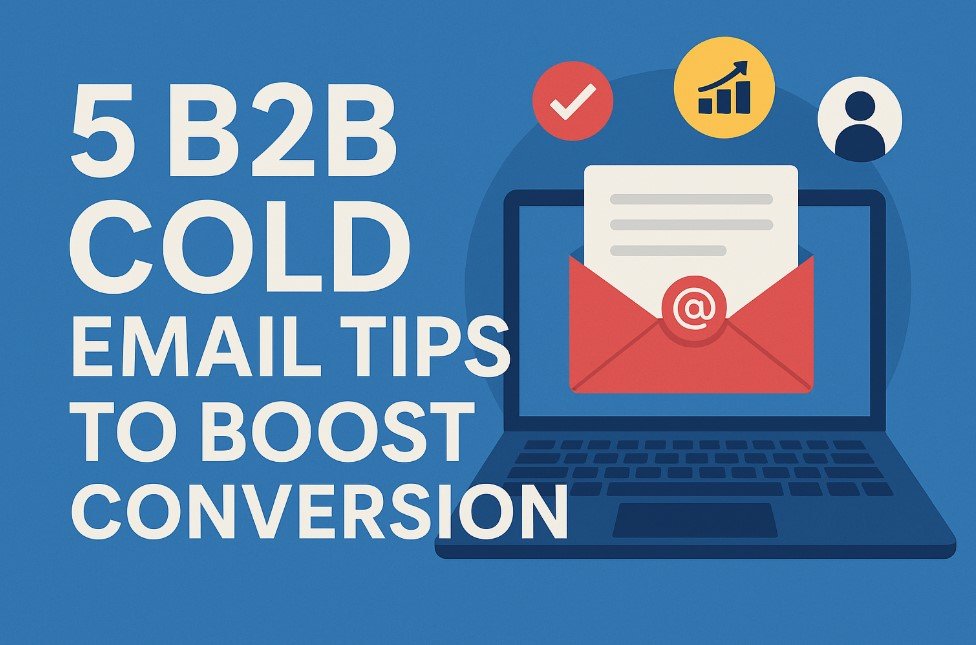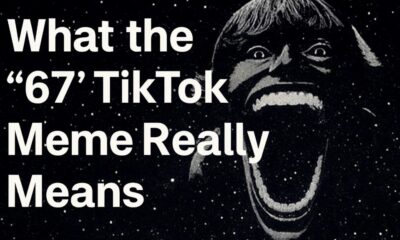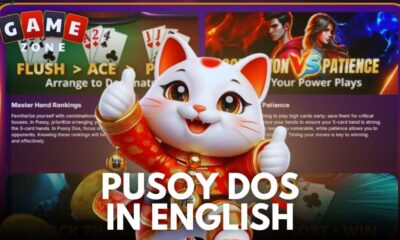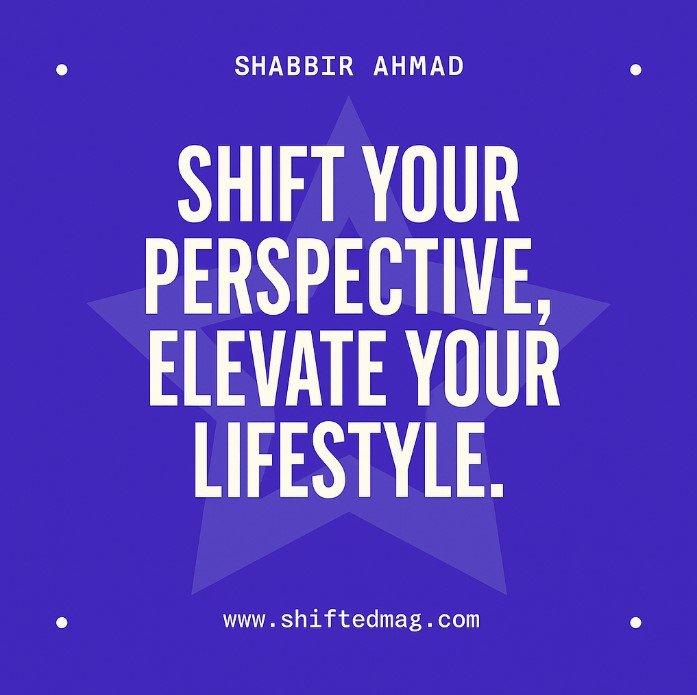Business
5 Best B2B Cold Email Tips That Boost Conversion

The landscape of B2B cold email marketing continues to evolve, yet certain fundamental strategies consistently drive superior conversion rates across industries. Recent data indicates that while the average cold email response rate hovers around 8.5%, top-performing sales professionals achieve response rates exceeding 40% through the strategic implementation of proven techniques. This analysis examines five critical strategies that distinguish high-converting cold email campaigns from the masses of ignored messages cluttering executive inboxes.
Strategic Research and Hyper-Personalization
The foundation of any successful B2B cold email campaign lies in comprehensive prospect research and meaningful personalization that extends far beyond inserting a first name into a template. Bruno Gavino, Founder and CEO of CodeDesign, emphasizes conducting thorough research on potential clients’ businesses, industry trends, and competitors to understand their specific needs, challenges, and opportunities. This research-driven approach enables sales professionals to craft messages that resonate with prospects’ actual pain points rather than generic value propositions.
Effective personalization involves identifying specific triggers that demonstrate genuine understanding of the prospect’s situation. LinkedIn sales leader Brooklin Nash advocates for focusing on relevance over superficial personalization, noting that “personalization means nothing if the offer isn’t relevant”. This approach requires analyzing prospects’ recent company announcements, industry challenges, competitive pressures, and individual professional backgrounds to create contextually appropriate outreach.
The most successful cold emailers spend more than 10 minutes researching each prospect before crafting their initial message. This investment in research translates directly into higher response rates, as recipients immediately recognize that the sender has taken time to understand their specific circumstances. Tools like Saleshandy’s lead finder, which provides access to over 700 million professional profiles, enable sales teams to gather comprehensive prospect intelligence efficiently.
Brevity and Structural Optimization
Email brevity emerges as a critical factor distinguishing successful cold emails from those that fail to generate responses. Research from Lavender, an email intelligence company, demonstrates that emails under 50 words achieve 60% more replies than longer messages. This finding reflects the reality that business decision-makers scan content rapidly, focusing only on information that appears immediately relevant and valuable.
Structural optimization involves organizing content for maximum readability and impact. Effective cold emails utilize short paragraphs of 2-3 sentences maximum, with simple sentence construction that facilitates rapid comprehension. Armand Farrokh, a prominent sales leader, advocates for eliminating unnecessary pleasantries that serve as code words for “this is a sales email,” recommending instead that senders lead immediately with content that prospects care about.
The optimal word count for B2B cold emails ranges between 100-150 words maximum, allowing sufficient space to convey value while respecting recipients’ time constraints. This brevity requirement forces senders to distill their message to essential components: problem identification, solution preview, and clear next steps. Sales professionals who consistently achieve high response rates organize their emails using proven frameworks that prioritize prospect benefits over product features.
Subject Line Mastery and First Impression Optimization
Subject lines function as the primary gateway determining whether prospects engage with cold email content, making their optimization crucial for campaign success. Research analyzing over 1,000 email subject lines reveals that 82% of successful campaigns utilize subject lines with 60 characters or fewer. This length constraint prevents truncation on mobile devices while forcing marketers to communicate core value propositions concisely.
The most effective subject lines balance curiosity generation with professional relevance, avoiding both generic corporate language and overly promotional terminology. Successful approaches include posing relevant questions that prospects want answered, referencing specific company circumstances, or highlighting time-sensitive opportunities. The legendary “Magic Goggles” subject line, which not only converted the recipient but generated social media sharing, demonstrates how creative yet contextually appropriate language can breakthrough inbox clutter.
Preview text optimization works in conjunction with subject lines to create compelling first impressions. Effective preview text continues the subject line’s intent while maintaining curiosity, providing additional context without revealing the complete message. This coordination between subject line and preview text creates a cohesive narrative that encourages email opening while setting appropriate expectations for the content within.
Relationship-Building Over Immediate Pitching
The most successful B2B cold email campaigns prioritize relationship development over immediate sales pitches, recognizing that business purchasing decisions involve extended evaluation periods and multiple stakeholders. Neil Patel’s research demonstrates that pitching products or services in the initial email significantly reduces conversion probability compared to relationship-building approaches. This finding reflects the reality that cold email recipients need time to develop trust before considering vendor partnerships.
Effective relationship-building strategies involve offering immediate value without requesting significant commitments in return. This might include sharing relevant industry insights, providing useful resources, or offering brief consultations focused on prospect challenges rather than vendor solutions. The goal involves establishing credibility and demonstrating expertise while positioning the sender as a valuable resource rather than another sales representative.
Follow-up sequences play crucial roles in relationship development, with data indicating that campaigns utilizing 3 email rounds achieve the highest reply rates at 9.2%. These sequences allow sales professionals to provide additional value, address different aspects of prospect challenges, and maintain top-of-mind awareness without appearing pushy or aggressive. The key involves spacing communications appropriately while maintaining consistent value delivery throughout the sequence.
Strategic Follow-Up and Multi-Touch Campaigns
Systematic follow-up strategies distinguish successful cold email campaigns from single-touch efforts that waste prospect research and initial engagement investments. Research indicates that prospects often intend to respond to relevant emails but forget due to competing priorities, making strategic follow-up essential for converting initial interest into actual conversations. The most effective campaigns utilize 5 or more emails in their outreach sequences, creating multiple opportunities for engagement across different timeframes and contexts.
Multi-channel integration enhances follow-up effectiveness by creating diverse touchpoints that accommodate different communication preferences. Successful sales teams combine email outreach with LinkedIn messages, phone calls, and SMS communications, increasing overall response probability while demonstrating persistent professional interest. This approach recognizes that decision-makers consume information through various channels and may respond more favorably to specific communication methods.
Timing optimization plays a crucial role in follow-up success, with research identifying 8:00 AM, 10:00 AM, and post-lunch periods as optimal sending windows for business communications. Geographic considerations require adjusting send times for prospect time zones, ensuring messages arrive during productive business hours rather than inconvenient periods. A/B testing different follow-up intervals, messaging approaches, and communication channels enables continuous campaign optimization based on actual response data rather than assumptions.
Conclusion
The five strategies outlined above represent the fundamental pillars supporting high-converting B2B cold email campaigns in today’s competitive marketplace. Success requires treating cold email as a strategic sales channel demanding significant upfront investment in research, personalization, and systematic execution rather than a quick outreach tactic. Organizations implementing these approaches consistently achieve response rates exceeding industry averages while building valuable prospect relationships that translate into sustainable revenue growth.
The evolution toward more sophisticated prospect expectations means that generic, templated approaches increasingly fail to generate meaningful engagement. Sales professionals who master these five core competencies position themselves to capitalize on cold email’s continued effectiveness while competitors struggle with declining response rates and missed opportunities. The investment in developing these capabilities pays dividends through improved conversion rates, shortened sales cycles, and enhanced competitive positioning in crowded B2B markets.
-

 Social Media2 months ago
Social Media2 months agoWhat the “67” TikTok Meme Really Means
-

 Tech2 months ago
Tech2 months agoWhat To Do When Your Business Faces Network Vulnerabilities
-

 Self Improvement2 months ago
Self Improvement2 months agoUsing BCBS Rehab to Access Quality Addiction Care
-

 Games2 months ago
Games2 months agoPusoy Strategies for Play That Also Work in Pusoy Dos in English






